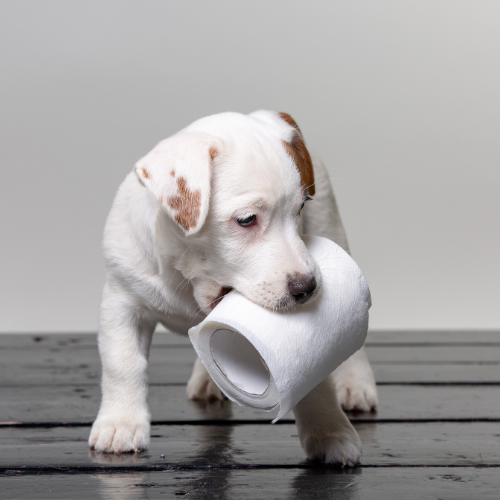
An Ultimate Guide to Puppy Potty Training in an Apartment + Bonus Apartment Training Tips
February 8, 2024
Puppy potty training in an apartment can be tricky, but it’s not impossible!
You’re about to embark on an incredible adventure. If you’ve started potty training, preparing to begin, or are stuck, these tips will help get you through.
This puppy potty training guide isn’t just for apartment renters or condo owners, it can also be applied to home owners, renters, townhouses, van life, or any other type of living situation. The rules are univeral.
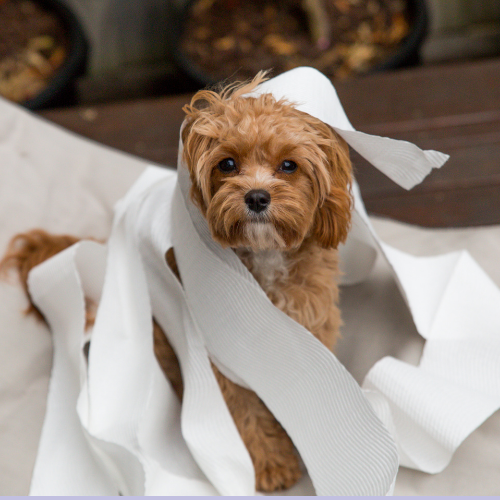
A Step by Step Guide to Potty Training Your Puppy in an Apartment
Step 1: Reward, reward, reward!!!!
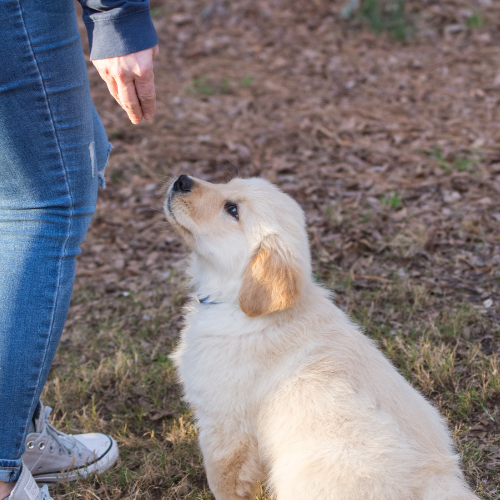
The first step in potty training is to reward your puppy every single time they successfully pee or poop outside. And being consistent with reinforcement is as equally important.
Reinforcement (rewarding for good behavior) is the one piece of communication you can use to tell your puppy, “yes! I LOVE when you pee and poop outside! Please do it more!”
And your puppy will think, “wow! Every time I pee or poop outside, mom throws me a treat party and tells me I’m amazing! I’ll do it more!”
Be generous with your rewards and over-the-top with your praise. Really sell it to your puppy that by eliminating (peeing or pooping) outside, they are the smartest, cutest, most amazing puppy in the world.
When do you start rewarding and praising? As soon as your puppy is finished peeing or pooping. You really want to reward them immediately, so that you reinforce the elimination, and not a behavior that they do after.
Step 2: Management is Key
What I mean by management is: set up your puppy’s environment and schedule for success. This means two things:
- Supervise your puppy when they are “free” in their puppy-proofed space or room. That means, eyes on them if they aren’t confined in a crate. And if you aren’t able to supervise them, then confine them in their crate or puppy-proofed space.
- Create a schedule so that you are providing your puppy with potty breaks throughout the day. Track how often you take out your puppy, and when accidents occur.
The rule of thumb is that your puppy should be able to hold their bladder the same amount of hours to their age in months. So a 3 month old puppy can only hold their bladder up to 3 hours max, a 4 month puppy should be able to hold it for 4 hours, etc.
If your puppy isn’t able to hold their bladder then grant them more frequent potty breaks, and then slowly increase the time between potty breaks.
Step 3: Work on Step 1 and 2 consistently for 3 weeks.
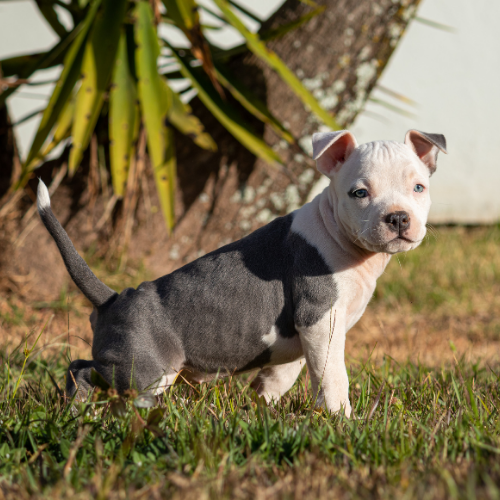
For three weeks do nothing else other than reward consistently for successful eliminations outside & manage your puppy when inside the home. If you do this, you’ll have a potty trained puppy in no time!
After 3 weeks, if you are experiencing 0 accidents in the home, then move to step 4. If you are still experiencing accidents, then revisit Steps 1 and 2.
Step 4: Loosen up management & grant more freedom
How do you “loosen up management?” Easy! You can give your puppy a little more freedom. Maybe you had your puppy in a puppy-proofed pen, or while you were working you had your puppy tethered to you by leash.
Now, you can give your puppy a little more freedom by giving them access to a bigger (yet still puppy-proofed) area. Or by allowing your puppy to be in the same room as you while you work, or cook, or watch tv. In simpler terms, you can take your eyes off of your puppy.
If you start to experience accidents after granting more freedom, then tighten up management again. And then loosen it once your puppy is successful again.
Step 5: Calmly interrupt and redirect accidents
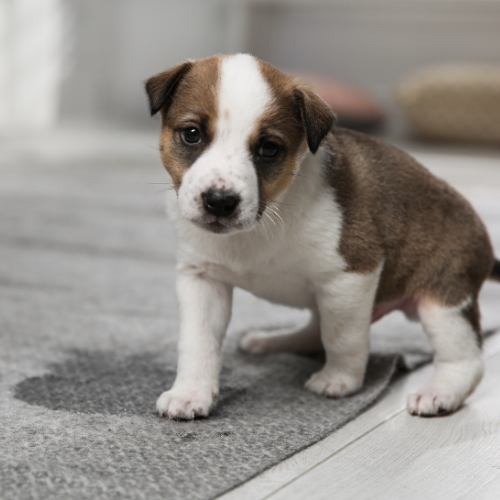
If your puppy is having an accident in your apartment, what do you do? You calmly walk over to your puppy, pick them up, and carry them outside. Once outside, encourage your puppy to pee or poop. If they do, reward and give praise!
If they don’t pee or poop when you’re outside, then come back in, confine your puppy in their puppy-proofed space, and clean up the accident with an enzymatic cleaner. Make note of what time the accident occurred, and make a plan to give your puppy a potty break sooner next time.
Don’t make it a big deal. Don’t shame your puppy. Don’t rub your puppy’s nose in it. And don’t yell at them. It’s very easy to instill fear in a puppy, and that’s something you absolutely do not want to do, especially when it comes to potty training.
You did it!
That’s it! Reward, management, and after 3 weeks calmly interrupt and redirect.
Potty training a puppy in an apartment can be exhausting and frustrating. But if you stick to these steps you’ll have a potty trained puppy sooner than you think.
15 Top Tips for Apartment Potty Training

#1: Keep a baggie of treats next to the door and your leash so you never forget them.
#2: Take your puppy out for a potty break as soon as they wake up or when you take them out of their crate.
Whether that’s in the morning, after a nap, or in the middle of the night. Chances are high that as soon as your puppy wakes up, they need to go. Waiting even a few minutes may result in an avoidable accident.
#3: Carry your puppy from the crate, through the hallway, on the elevator, through the lobby, and out to your potty spot.
This will often prevent those unwanted accidents in the apartment building. For some reason, when you carry your puppy, they won’t pee.
#4: Take your puppy out for a potty break when they are sniffing, circling, or looking at you.
You’ll learn the signs quickly enough for when your puppy needs to potty. The key is to act quickly, and take them outside.
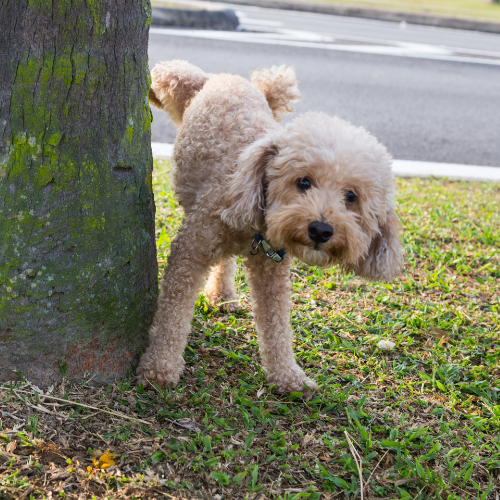
#5: Tether your puppy to you using a leash, or keep your puppy on your lap to avoid missing any signs of a potential accident.
#6: Set an alarm, so that you never forget to take your puppy out for their potty break.
#7: Keep a track of the time and type of eliminations, potty breaks, and accidents.
#8: Keep your dog confined in a crate, in a play pen, or a puppy-proofed room.
This will minimize accidents as well as destruction from chewing. The last thing you want are your baseboard chewed up and your security deposit down the drain. Be smart with where you give your puppy freedom.
#9 Slowly increase the time between potty breaks, and only when your puppy is having success.
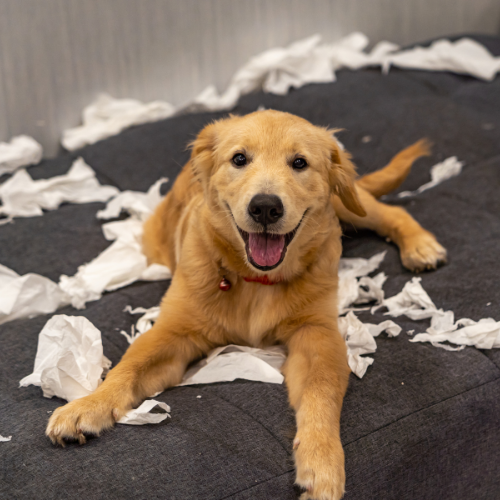
#10 If you need to go to work and leave your puppy longer than their potty schedule allows, consider hiring a dog walker.
Many dog walkers offer drop in visits where they will take your puppy out to potty and play. They can work with your schedule and keep your puppy on track.
#11 If you’re using pee pads in the apartment, but don’t plan on using them forever, get rid of them now and just follow my potty training steps instead.
Follow my potty training tips without pee pads, and you’ll have a potty trained dog quicker than you think.
#12 Don’t “rub your dog’s nose” in pee or poop.
This can scare your dog and cause more behavioral issues that you’ll need to address later.
#13 Use enzymatic cleaning solution for all accidents in your apartment.
Dog urine has a special scent that dog noses pick up. Many times those special properties trigger a dog to pee. When we don’t eliminate the odor in our homes, it could continuously trigger our dogs to pee in the same location over and over again.
Cleaning with an enzymatic solution can minimize and eliminate that special odor. Here are some options.
#14: After your potty break, do a short 5 minute socialization session.
Let your puppy watch the world go by, and feed them delicious treats while you do so. Let them meet your leasing agents, residents, or dogs (vaccinated and friendly to puppies).
As long as your dog is comfortable and showing good body language, potty breaks can be a wonderful opportunity to safely socialize them to their new world.
#15: If your dog was previously potty trained, and is starting to have accidents in the house and you don’t know why, then make a vet appointment immediately.
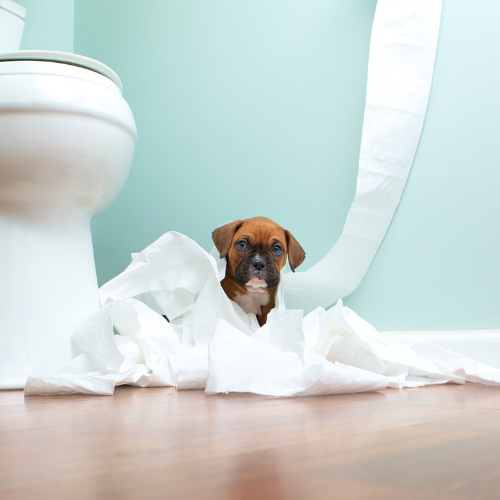
Bonus: Puppy Apartment Training Tips
#1: Set up a puppy-proofed zone in your apartment
Designate a room, like the kitchen, and block off an area using gates. Or set up a playpen in an open room.
Your puppy’s zone should contain: water in a spill-proof bowl, crate (if crate training), bedding or raised cot, work-to-eat toys like a Westpaw Toppl and LickiMats, & appropriate puppy chew toys.
Your puppy’s zone should NOT contain: couches, chairs, dining room tables, curtains, cords, rugs, or hazardous items.
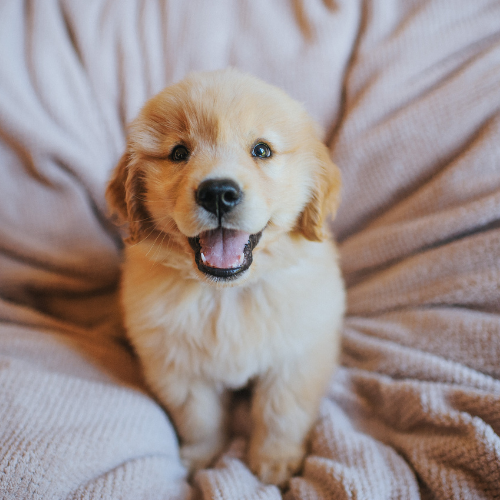
#2: Make crate training positive
Day: Keep the crate door open and allow puppy to go in and out. Hide treats to find so the crate predicts good things.
Night: Place the crate next to your bed or prop it on a nightstand so they’re level with you. You can and should give your puppy comfort if needed.
Crate Size: Should only be big enough so your puppy can stand and turn around. Any bigger and they might use one end as a potty.
Pro Tip: If puppy cries longer than 5 mins then they’re communicating they’re scared or need a potty break. Don’t let your puppy “cry it out.”
#3: Barking is a form of communication
If your puppy is barking, there might be some underlying reason why.
Bored: Provide chews, toys & activities. Instead of feeding meals in a bowl try an interactive feeder.
Tired: Is your puppy zooming, nipping or barking? Puppies need A LOT of sleep. Up to 18-20 hours/day! Set up an ex-pen or comfy crate to encourage naps.
Afraid: If your puppy is continuously barking in their crate, while you’re away or at a person, sound, or thing then: Call a positive reinforcement trainer for help.
Puppy potty training in an apartment is easy as 1-2-3!
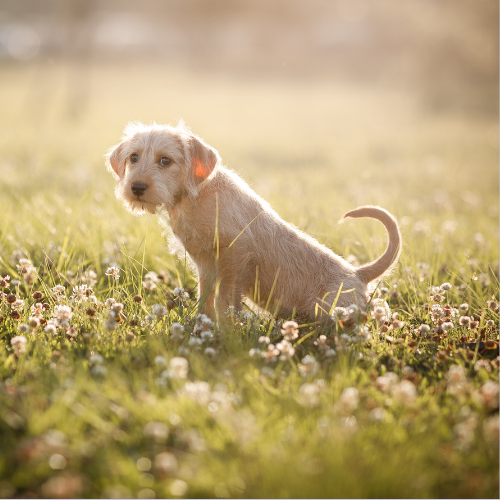
Potty training is daunting, and can be one of the most challenging pieces of puppyhood. But with a solid plan, consistency, and patience, it can be accomplished.
Remember to reward every successful potty outside, supervise your puppy inside, and only interrupt and redirect once your puppy starts being successful after a few weeks.
If you follow my steps you will have a potty trained pup in no time.
Need professional help potty training your puppy at your apartment?

Hi, I’m Lauren with Wildflower Dog Training!
Potty training is topic that is really important to me. Having a dog who is not house trained can cause a lot of stress, loss of money, and sometimes resentment towards your dog. That can often end in a surrender of dogs to shelters.
My goal is to help puppy owners and new adult dog adopters to master potty training so that they can enjoy life with their new companion, and decrease surrenders to shelters.
If you’d like to work with me on potty training please contact me, or book a Goal Setting Session.
You can also check out my Wildflower Puppy Program, which is a done-for-you training package where I come to your home and do most of the training for you. It’s great for working professionals and busy families.
Or, if you have other training goals you’d like to accomplish like walking better on leash, or training polite manners like sitting to greet, dropping valuable items, or relaxing on a mat during dinner, check out my Adolescent & Adult Dog Training programs.
Leave a Reply Cancel reply
popular blog posts
Lauren Zimniski of
Wildflower Dog Training offers
dog & puppy training in Denver, CO
view our service area
Lauren@wildflowerdogs.com

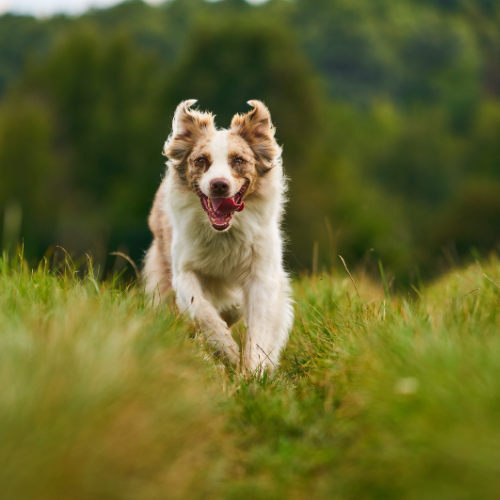

post comments